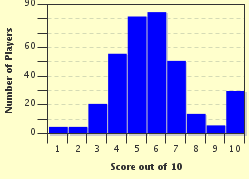Quiz Answer Key and Fun Facts
1. (This quiz is based on US websites and medication.)
The two types of "fat" molecules, triglyceride and cholesterol, are carried in microscopic globs in our blood stream such as LDL and HDL. What do these latter two terms stand for?
2. The term "dyslipidemia" is replacing the term "hyperlipidemia" because, whereas "hyperlipidemia" indicates elevated lipid levels, some lipid levels are favorable when high. Which lipid "packet" is considered "good cholesterol"?
3. Good and bad cholesterol are not the only factors that predict one's risk of heart attacks and strokes. Which of the following is also predictive of cardiovascular risk?
4. One can become confused regarding the effect of gender on coronary risk. Relative to men, women are at considerably less risk, but this relative protection can be overcome. How would a woman have to differ from a non-smoking 50 year old man whose 10 year risk of heart attack or death was 1/10 in order to have the same risk? (The man has total cholesterol of 210, an HDL of 50 and a systolic blood pressure of 140 at age 50)
5. Online risk calculators are available for the estimation of coronary risk. For both the National Cholesterol Education Program's calculator for men and women and the Reynolds Risk Calculator used for women only, which cholesterol measurements are required?
6. Which risk factor information does the Reynolds calculator of cardiovascular risk for women utilize that the National Cholesterol Education Program's risk calculator does not?
7. Which of the following dietary changes could be expected to lower LDL cholesterol?
8. Which dietary change is most likely to lower HDL cholesterol levels?
9. Niacin has been shown to substantially reduce the risk of coronary events in selected patients. What is NOT a potential advantage of using niacin prescribed by a physician over taking over-the-counter preparations?
10. Proving that an elevated or reduced level of a substance in the blood stream is associated with disease does not insure that treatments that reduce blood levels of the substances will alter the risk or outcome of the disease. Which of the following have studies indicated a lack of connection between medication or dietary changes in blood levels and improvements in disease rates and outcomes?
Source: Author
uglybird
This quiz was reviewed by FunTrivia editor
crisw before going online.
Any errors found in FunTrivia content are routinely corrected through our feedback system.

